Nursing Home Visit
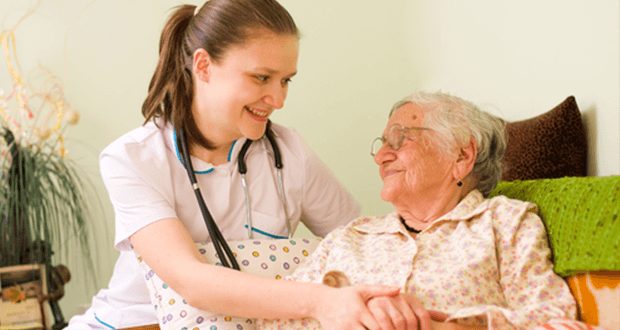

Description
A nursing home visit is a family- nurse contact which allows the health worker to assess the home and family situations in order to provide the necessary nursing care and health related activities. In performing home visits, it is essential to prepare a plan of visit to meet the needs of the client and achieve the best results of desired outcomes.
- To give care to the sick, to a postpartum mother and her newborn with the view teach a responsible family member to give the subsequent care.
- To assess the living condition of the patient and his family and their health practices in order to provide the appropriate health teaching.
- To give health teachings regarding the prevention and control of diseases.
- To establish close relationship between the health agencies and the public for the promotion of health.
- To make use of the inter-referral system and to promote the utilization of community services
The following principles are involved when performing a home visit:
- A home visit must have a purpose or objective.
- Planning for a home visit should make use of all available information about the patient and his family through family records.
- In planning for a home visit, we should consider and give priority to the essential needs if the individual and his family.
- Planning and delivery of care should involve the individual and family.
- The plan should be flexible.
The following guidelines are to be considered regarding the frequency of home visits:
- The physical needs psychological needs and educational needs of the individual and family.
- The acceptance of the family for the services to be rendered, their interest and the willingness to cooperate.
- The policy of a specific agency and the emphasis given towards their health programs.
- Take into account other health agencies and the number of health personnel already involved in the care of a specific family.
- Careful evaluation of past services given to the family and how the family avails of the nursing services.
- The ability of the patient and his family to recognize their own needs, their knowledge of available resources and their ability to make use of their resources for their benefits.
- Greet the patient and introduce yourself.
- State the purpose of the visit
- Observe the patient and determine the health needs.
- Put the bag in a convenient place and then proceed to perform the bag technique .
- Perform the nursing care needed and give health teachings.
- Record all important date, observation and care rendered.
- Make appointment for a return visit.
- Bag Technique
- Primary Health Care in the Philippines
2 thoughts on “Nursing Home Visit”
Thanks alots for the impressive lessons learnt from the principal of community health care and nursing home
Home visit nursing
Leave a Comment Cancel reply

Nursing Home Visit – Tips & What To Expect
If you are preparing for your first nursing home visit, read this guide. This is packed with helpful tips so you can be prepared.
Reasons Nurses Do Home Visits
There are lots of reasons that a nurse might visit someone’s home. Before I share some of my tips, it’s important to understand the purpose of the visit. Each type of home visit will have different goals and outcomes, so you’ll do different things when you arrive.
These are the main reasons that nurses might do home visits:
- Care for a sick patient as a home-care nurse
- Teach care techniques to a postpartum family
- Assess the living condition of a patient and/or their family members for upcoming care
- Teach people about prevention and control of diseases from within their homes
- To promote the utilization of community services
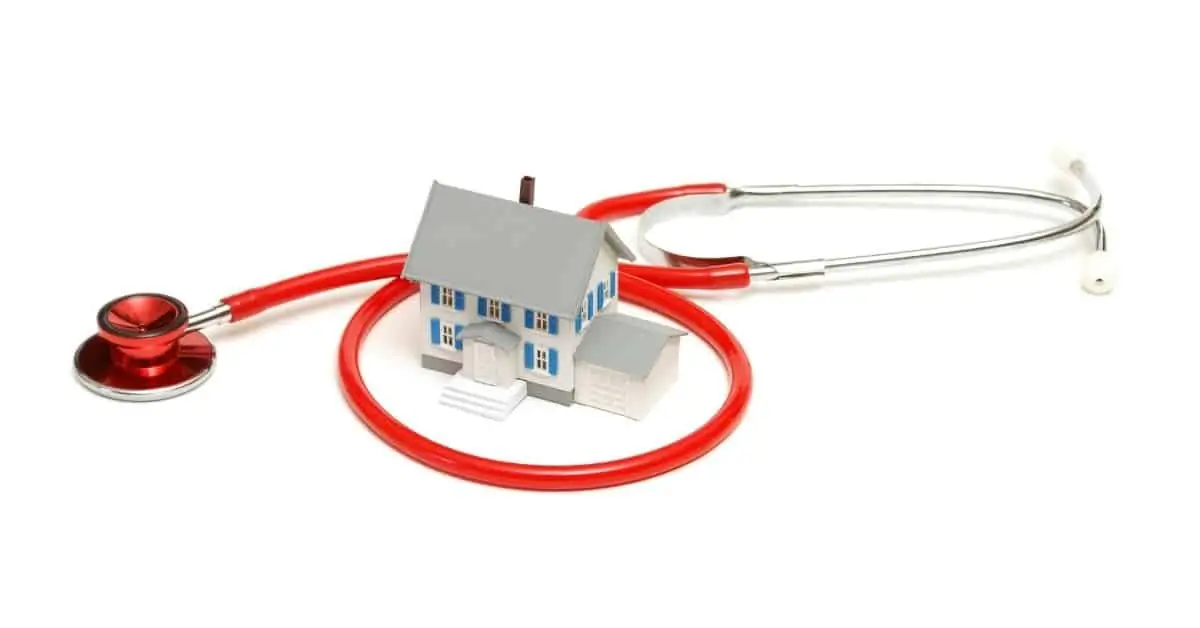
7. Make Another Appointment
Your chances of doing a home visit as a nurse will depend on where you work. Typically, community outreach organizations and home health care agencies will do the most frequent home visits.
How To Decide Whether To Do A Home Visit
If you are a new nurse, you probably won’t be the one making the decision about whether to visit a patient’s home, but it is still good to know how the decision is made.
Typically, these are the main guidelines that health care providers use to decide whether nurses should visit a patient in their home:
- The needs of the patient and their family – including physical, psychological, and educational
- Patient and family’s acceptance and willingness to cooperate
- Patient and family’s ability to recognize their needs and their ability to use the resources for their benefits
- How many health personnel are already involved in the care of this specific family
- The policy of the agency in regards to the home visits
How To Do A Home Visit
When it comes time to do your first home visit, just follow these steps in order. This will help you have a pleasant experience and make sure you don’t forget something important.
1. Greet The Patient
Arrive with a smile and introduce yourself. Remember to state where you are coming from and your role in the agency. Make sure you ask them their name and what they prefer to be called (if they have a nickname).
2. Tell Them The Purpose Of The Visit
Go into detail about why you are there and what you are hoping to accomplish. This part should be detailed so that they know what to expect.
3. Assess The Patient
Next you will do a quick observation and assessment. This is a silent and mental one so that you know what you will have to do while on your visit.
4. Set Your Bag In A Clean Place
Make sure your bag is sitting on a table that is lined with clean paper. Then, wash your hands with soap and water. Take out all the tools you will need for your visit so they are easy to access. Put on an apron, close the bag, and you are ready for your nursing care treatment.
5. Perform Your Nursing Care
After you are all prepared, you can do the care which you came to do. One of the most important things you will do on these visits is educate the patient and/or their family. Listen to their questions attentively and answer them the best you can. Direct them to any community services if you cannot help them right away.
6. Keep Excellent Records
Write everything down. Record the date, what you observed, and all the care you gave the patient. Also write down everything you told the family for caring for the patient at home.
If necessary, make an appointment to return and give more care. This is always needed, but don’t leave until you verified whether they need a follow up.
Nursing Home Visit: Final Thoughts
It might be nerve-wracking to think about visiting a patient or their family at their home. If you are really nervous, you can ask a friend or family member to help you prepare. Do a few practice runs as you introduce yourself and go through the motions of the assessment and care.
Set realistic expectations for yourself. If you need notes to remember what to ask, then take them along. Always ask for help when you need it. These can be very valuable and give the education and support that the patient and/or their family
More Nursing Tips
If you enjoyed these nursing home visit tips, then here are some more tips and advice about life as a nurse.
- How To Get ACLS Certified
- How To Write A Cover Letter
- The Best Accelerated Nursing Programs
About The Author
Brittney wilson, bsn, rn, related posts.
Debunking 5 Myths About Millennial Nurses
Male Nurse Jokes and Memes For All the Murses Out There
The nursing process as an administrative nurse.

Best Medical Dictionaries for Nurses
Leave a comment cancel reply.
Your email address will not be published. Required fields are marked *
Save my name, email, and website in this browser for the next time I comment.
This site uses Akismet to reduce spam. Learn how your comment data is processed .
Start typing and press enter to search
- Anatomy and Physiology
- Biochemistry and Nutrition
- Microbiology
- Nursing Foundation
- Medical Surgical Nursing I
- Community Health Nursing
- Communication Nursing Technology
- Pharmacology, Pathology and Genetics
- Child Health Nursing
- Medical Surgical Nursing
- Mental Health Nursing
- Research and Statistics
- Management Studies
- Bio sciences
- Behavioural Sciences
- Medical surgical Nursing I
- Medical surgical Nursing II
- Nursing Education and Introduction to Research and Statistics
- Community Health Nursing II
- Professional Trends and Adjustments
- Midwifery and Gynaecological Nursing
- Nutrition and Dietetics
- Biochemistry and Biophysics
- Maternal Nursing
- Medical and Surgical Nursing
- Introduction to Nursing Education
- Introduction to Nursing Administration
- Introduction to Nursing Research and Statistics
- Nursing Education
- Advance Nursing Practise
- Nursing Research and Statistics
- Clinical Speciality I
- Nursing Management
- Medical Surgical Nursing (MSN)
- Psychiatric Nursing
- Medical Disease and Condition
- Pharmacology (Drug Notes)
- Nurse Jobs and Career
- Nurse Article
- Nursing Examination
- Nursing Important Questions
- Nursing Procedure

NURSING PROCEDURES LIST CLICK HERE
NURSING IMPORTANT QUESTIONS – CLICK HERE
NURSE FUNDAMENTAL PROCEDURES
MEDICAL SURGICAL NURSING
KEY COMPONENTS IN HOME VISITS
1. Assessment:
- Conduct a thorough assessment of the home environment, including living conditions, safety hazards, and available support systems.
2. Purpose of the Visit:
- Clearly define the purpose of the home visit, whether it is for routine check-ups, health education, medication management, post-discharge follow-up, or addressing specific health concerns.
3. Appointment and Consent:
- Schedule home visits at convenient times for the client and obtain consent for the visit. Respect the client’s privacy and autonomy.
4. Communication:
- Establish effective communication with the client and their family. Listen actively, address concerns, and encourage open dialogue to better understand their needs.
5. Cultural Competence:
- Be culturally competent and respectful of the client’s cultural practices, beliefs, and values. Consider cultural factors when planning and delivering care.
6. Safety Precautions:
- Assess and address safety concerns in the home, including fall risks, fire hazards, and other environmental factors. Provide education on maintaining a safe living space.
7. Medication Management:
- Review medications with the client, ensuring proper administration and understanding. Address any concerns or questions regarding medications.
8. Health Education:
- Provide individualized health education on topics such as chronic disease management, nutrition, hygiene, and preventive care. Use visual aids and written materials as needed.
9. Family Involvement:
- Involve family members or caregivers in the care plan, as appropriate. Consider their support and collaboration in maintaining the client’s health.
10. Health Promotion: – Encourage and facilitate healthy lifestyle choices. Discuss strategies for maintaining or improving health and preventing illness.
11. Assessment of Activities of Daily Living (ADLs): – Evaluate the client’s ability to perform daily activities, such as bathing, dressing, and eating. Provide assistance or make recommendations for improvement as needed.
12. Monitoring and Follow-up: – Establish a plan for ongoing monitoring and follow-up. Determine the frequency of home visits based on the client’s needs and the nature of the healthcare issue.
13. Documentation: – Document the home visit thoroughly, including assessments, interventions, education provided, and any changes in the client’s health status. Maintain accurate and up-to-date records.
14. Collaboration with Other Healthcare Providers: – Collaborate with other healthcare professionals involved in the client’s care, such as physicians, therapists, and social workers. Ensure a coordinated and holistic approach.
15. Respect for Autonomy: – Respect the client’s autonomy and involve them in decision-making regarding their care. Encourage them to express their preferences and goals for health and well-being.
LEAVE A REPLY Cancel reply
Save my name, email, and website in this browser for the next time I comment.
Related article
Complete list of nursing notes link, concurrent & terminal disinfection, cardiopulmonary resuscitation (cpr), back care / back massage / back rub.

An official website of the United States government
The .gov means it’s official. Federal government websites often end in .gov or .mil. Before sharing sensitive information, make sure you’re on a federal government site.
The site is secure. The https:// ensures that you are connecting to the official website and that any information you provide is encrypted and transmitted securely.
- Publications
- Account settings
Preview improvements coming to the PMC website in October 2024. Learn More or Try it out now .
- Advanced Search
- Journal List
- ScientificWorldJournal
- v.2021; 2021

The Practice of Home Visiting by Community Health Nurses as a Primary Healthcare Intervention in a Low-Income Rural Setting: A Descriptive Cross-Sectional Study in the Adaklu District of the Volta Region, Ghana
Kennedy diema konlan.
1 Department of Public Health Nursing, School of Nursing and Midwifery, University of Health and Allied Sciences, Ho, Ghana
2 College of Nursing, Yonsei University, 50-1, Yonsei-ro, Seodaemun-gu, Seoul 03722, Republic of Korea
Nathaniel Kossi Vivor
Isaac gegefe, imoro a. abdul-rasheed, bertha esinam kornyo, isaac peter kwao, associated data.
The data used to support the findings of this study are included within the article.
Home visit is an integral component of Ghana's PHC delivery system. It is preventive and promotes health practice where health professionals render care to clients in their own environment and provide appropriate healthcare needs and social support services. This study describes the home visit practices in a rural district in the Volta Region of Ghana. Methodology . This descriptive cross-sectional study used 375 households and 11 community health nurses in the Adaklu district. Multistage sampling techniques were used to select 10 communities and study respondents using probability sampling methods. A pretested self-designed questionnaire and an interview guide for household members and community health nurses, respectively, were used for data collection. Quantitative data collected were coded, cleaned, and analysed using Statistical Package for Social Sciences into descriptive statistics, while qualitative data were analysed using the NVivo software. Thematic analysis was engaged that embraces three interrelated stages, namely, data reduction, data display, and data conclusion.
Home visit is a routine responsibility of all CHNs. The factors that influence home visiting were community members' education and attitude, supervision challenges, lack of incentives and lack of basic logistics, uncooperative attitude, community inaccessibility, financial constraint, and limited number of staff. Household members (62.3%) indicated that health workers did not adequately attend to minor ailments as 78% benefited from the service and wished more activities could be added to the home visiting package (24.5%).
There should be tailored training of CHNs on home visits skills so that they could expand the scope of services that can be provided. Also, community-based health workers such as community health volunteers, traditional birth attendants, and community clinic attendants can also be trained to identify and address health problems in the homes.
1. Introduction
Home visit practice is a healthcare service rendered by trained health professionals who visit clients in their own home to assess the home, environment, and family condition in order to provide appropriate healthcare needs and social support services. The home environment is where health is made and can be maintained to enhance or endanger the health of the family because individuals and groups are at risk of exposure to health hazards [ 1 , 2 ]. At home visit, conducted in a familiar environment, the client feels free and relaxed and is able to take part in the activity that the health professional performs [ 1 ]. It is possible to assess the client's situation and give household-specific health education on sanitation, personal hygiene, aged, and child care. The important role the health professional plays during home visits (HV) cannot be overemphasized, and this led Ghana to adopt HV as a cardinal component of its preventive healthcare delivery system. This role is largely conducted by community health nurses (CHN) [ 2 ]. Health education given during HVs is more effective, resulting in behavioural change than those given through other sources such as the mass media [ 3 ].
In the home, the health professionals, mostly CHN monitor the growth, development, and immunization status of children less than 5 years and carry out immunization for defaulters. Care is given to special groups such as the elderly, discharged tuberculosis, and leprosy patients as well as malnourished children [ 1 , 2 ]. It is also possible to carry out contact tracing during HVs [ 2 ]. These services may prevent, delay, or be a substitute for temporary or long-term institutional care [ 4 , 5 ]. HV has potential for bringing health workers into contact with individuals and groups in the community who are at risk for diseases and who make ineffective or little use of preventive health services [ 2 ]. Several factors influence the conduct of HVs. These factors include location of practice, general practitioners age, training status, and the number of older patients on the list and predicts home visiting rate [ 6 ].
The concept of HV has remained in Ghana over the decades, and yet, its very essence is imperative [ 3 ]. In Ghana, home visiting is one of the major activities of CHN. The health visitors, as CHNs were then called, went from house to house, giving education on sanitation and personal hygiene [ 3 ]. These nurses attempt to promote positive health and prevent occurrence of diseases by increasing people's understanding of healthy ways of living and their knowledge of health hazards [ 7 ]. HVs remain fundamental to the successful prevention of deaths associated with women and children under five; yet, there still remain certain gaps in the successful implementation of this innovative intervention in Ghana [ 4 ]. In Sekyere West district in Ashanti Region of Ghana, although nurses had knowledge of home visiting and had a positive opinion of the practice, they could not perform their home visiting tasks or functions up to standard [ 8 ]. Home visiting practice in that district among nurses was found to be very low, even though community members desired more [ 8 ]. The findings indicate that there is a need for HV [ 9 ]. Also identified were several health hazards, such as uncovered refuse containers, open fires, misplaced sharp objects, open defecation, and other unhygienic practices that a proper home visiting regiment can address [ 8 ]. At the service level, lack of publicity about the service, the cost of the service, failure to provide services that meet clients' felt needs, rigid eligibility criteria, inaccessible locations, lack of public transport, limited hours of operation, inflexible appointment systems, lack of affordable child care, poor coordination between services, and not having an outreach capacity were identified as the challenges associated with this kind of service [ 9 – 13 ].
Home visiting is a crucial tool for enhancing family healthcare and the health of every community. Ghana Health Service through home visiting services has supported essential community health actions and address gaps in knowledge and community practices such as reproductive behaviour, nutritional support for pregnant women and young children, recognition of illness, home management of sick children, disease prevention, and care seeking behaviours [ 4 ]. As many interventions are implemented by stakeholders in health to ensure that home visiting practices actually benefit community members, recent studies have not delved into the practices of home visiting in poor rural communities especially in the Volta Region of Ghana. This study assessed the home visiting practices in the Adaklu district (AD) of the Volta Region.
This study assessed the practice of home visiting as a primary healthcare (PHC) intervention in a poor rural district in the Volta Region of Ghana.
2. Methodology
2.1. study design.
This mixed method study employed a descriptive cross-sectional study design as the study involved a one-time interaction with the CHNs and the community members to assess the practice of HVs.
2.2. Study Setting
The AD is one of the districts in the Volta Region of Ghana and has about 40 communities. The district capital and administrative centre is Adaklu Waya. The estimated population of the district was 36391 representing 1.7% of the Volta Region's population before the Oti Region was carved out [ 14 ]. The district is described as a rural district [ 14 ] as no locality has a population above 5000 people. The economically active population (aged 15 and above) represents 67% of the population [ 14 ]. The economically inactive population is in full-time education (55.1%), performed household duties (20.6%), or disabled or too sick to work (4.6%), while the employed population engages in skilled agricultural, forestry, and fishery workers (63.1%), service and sales (12.6%), craft and related trade (14.6%), and 3.4% other professional duties [ 14 ]. The private, informal sector is the largest employer in the district, employing 93.9% [ 14 ]. There are 15 health facilities in the district government health centres [ 4 ], one health centre by Christian Health Association of Ghana, and 10 community health-based planning services (CHPS) of which 5 are functional [ 15 ]. The housing stock is 5629 representing 1.4% of the total number of houses in the Volta Region. The average number of persons per house was 6.5 [ 14 ], and the houses are mostly built with mud bricks [ 15 ]. The most common method of solid waste disposal by households is public dumping in the open space (47.5%). Some households dump solid waste indiscriminately (17.3%), while other households dispose of burning (13.3%) [ 14 ].
2.3. Study Population, Sample, and Sampling Technique
There are about 36391 inhabitants with 6089 households in AD [ 14 ]. This study mainly involved adult members of the household and CHNs from randomly sampled communities in the district. These sampled communities included Abuadi, Anfoe, Ahunda, Dawanu, Goefe, Helekpe, Hlihave, Tsrefe, Waya, and Wumenu. An adult member of the household is a person above the age of 18 years who has the capacity to represent the household. CHN [ 11 ] from the selected communities in the district was recruited. A CHN is a certified health practitioner who combines prevention and promotion health practices, works within the community to improve the overall health of the area, and has a role to play in home visiting.
Estimating for a tolerable error of 5%, with a confidence interval of 95%, and a study population of 6089 households, with a margin of error of 0.05 using Yamane's formula for calculating sample for finite populations, a sample of 375 households were computed. The sample size was increased to 390 to take into consideration the possible effect of nonresponse from participants. Multistage sampling technique was adopted to eventually select study participants. Each community was stratified into four geographical locations: north, south, east, and west with respondents being selected from every second house using a systematic sampling approach. In each household, an adult member of the household responded to the questionnaire.
A whole population sampling method was used to select eleven [ 11 ] CHNs from the specific communities [ 10 ] where the study took place in the district. The CHN that served the 10 selected communities were selected. The numbers selected from each community were Helekpe (18.2%), Waya (18.2%), Anfoe (9.1%), Tsrefe (27.3%) and Wumenu (27.3%). This represented 42.3% of the total CHN community of the district at the time of the study.
2.4. Pretesting
The questionnaire and interview guide were piloted using 30 adult household members and 5 CHNs, respectively, at Klefe CHPS in the Ho municipality. The data collected through the questionnaire were subjected to a reliability test on SPSS (version 22). The pretesting ascertained the respondent's general reaction and particularly, interest in answering the questionnaire. The questionnaire was modified until it produced a Cronbach alpha coefficient of 0.790. It can therefore be concluded that the questionnaire had a high reliability in measuring the objectives of the study. The pretesting helped in identifying ambiguous questions and revising them appropriately. It also helped to structure and estimate the time the respondents used to answer the questionnaires and to respond to the interview.
2.5. Data Collection
Researchers from the University of Health and Allied Sciences School of Nursing and Midwifery were involved in data collection. Five researchers received two days training in data collection, the study tools, and research ethics for social sciences prior to the commencement of data collection. All researchers had a minimum of a bachelor degree in CHN with at least three years' data collection experience.
Respondents were assisted to respond to a questionnaire within their homes. The household questionnaire had four [ 4 ] sections comprising personal details and how HV practice is carried out in the home such as frequency of visit, duration, and activities. Subsequent sections had respondents answer questions on the challenges, benefits, and factors that could promote the HV practice. It took an average of about 15 minutes to complete a single questionnaire.
A semistructured interview guide was used to interview CHNs. This guide was in four sections; the first section was personal details with subsequent sections on practice of home visits, constraints to the practice, the benefits, and promotion factors to HVs. An interview section lasted 20–25 minutes to complete.
2.6. Data Analysis
2.6.1. quantitative data.
Each individual questionnaire was checked for completeness and appropriateness of responses before it was entered into Microsoft Excel, cleaned, and transferred to the Statistical Package for Social Sciences (version 22) for analysis. The data were basically analysed into descriptive statistics of proportions. There were also measures of central tendencies for continuous variables.
2.6.2. Qualitative Data
In data analysis, thematic analysis was engaged that embraces three interrelated stages, namely, data reduction, data display, and data conclusion [ 16 ]. CHNs views were summarised based on the conclusions driven and collated as frequencies and proportions. Guest, Macqueen, and Namey summarised the process of thematic analysis as construing through textual data, identifying data themes, coding the themes, and then interpreting the structure and content of the themes [ 17 ]. In using this scheme, a codebook was first established, discussed, and accepted by the authors. The nodes were then created within NVivo software using the codebook. Line-by-line coding of the various transcripts was performed as either free or tree nodes. Double coding of each transcript was carried out by two of the researchers. Coding comparison query was used to compare the coding, and a kappa coefficient (the measurement of intercoder reliability) was generated to compare the coding that was conducted by the two authors. The matrix coding query was performed to compare the coding against the nodes and attributes using NVivo software that made it possible for the researchers to compare and contrast within-group and between-group responses.
2.7. Ethical Consideration
Ethical clearance was obtained on the 19th September, 2018, from the Research and Scientific Ethics Committee of the Institute of Health Research, University of Health and Allied Sciences (UHAS-REC A.2 [13] 18-19). Permission was sought from the district health authorities, chiefs, and assembly members of each study community. Preliminary to the administration of the questionnaires, an informed consent was obtained as respondents signed/thumb printed a consent form before they were enrolled into the study. Participants could withdraw from the study anytime they wished to do so.
3.1. Household Members' Views regarding Home Visit
The household representatives surveyed (375) had a mean age of 41.24 ± 16.88 years. The majority (26.5%) of household members were aged between 30 and 39 years. Most (75.1%) were females. The majority (97.1%) of people in households were Christians, while 38% was farmers. The majority (69.9%) of household members were married as 47.2% had schooled only up to the JHS level as at the time of this survey as given in Table 1 .
Demographic characteristics of household members.
The majority (73.3%) of adult household members had ever been visited by a health worker for the purpose of conducting HVs as a significant number (26.7%) of household members had never been visited by health workers in the community. Most (52.6%) household members had had their last visit from a health worker during the past month. Within the past three months, some (48.2%) community members were visited only once by a health worker. The majority (93.4%) of community members were usually visited between the time periods of 9am and 2pm as given in Table 2 . The community members contend that home visiting was beneficial to the disease prevention process (65%). The people that need to be visited by CHNs include children under five (25%), malnourished children's homes (14%), children with disabilities (14%), mentally ill people (11%), healthcare service defaulters (22%), people with chronic diseases (9%), and every member of the community (5%).
Practice of home visits in AD (household members).
Most (87.9%) community members were given health education during HVs conducted by the CHN. In describing the nature of health education that is most frequently given by CHNs during HVs, household members indicated fever management (14%), malaria prevention (20%), waste disposal (11%), prevention and management of diarrhoea (22%), nutrition and exclusive breastfeeding (14%), hospital attendance (14%), and prevention of worm infestations (5%). The majority (62.3%) of community members did not receive a minor ailment management during HVs as most (66.5%) of community members received vaccination during HVs by CHNs. Describing the type of minor ailment treatment given during the HV include care of home accidents (13%), management of minor pains (22%), management of fever (45%), and management of diarrhoea (20%). Household members (24.5%) did identify bad timing as a barrier for home visiting, while some (13.1%) did identify the attitude of health workers as a barrier to home visiting. However, most (67.3%) of the household members attributed their dislike for home visiting to the duration of the visit. The majority (95.2%) of household members indicated health workers were friendly. Some household members (78%) indicated they benefited from HVs conducted in their homes. The majority (91.4%) of household members showed that time for home visiting was convenient. Indicating if household members will wish for the conduct of the HV to be a continuous activity of CHNs in their community, the respondents (82%) were affirmative.
3.2. CHNs Views on Home Visit in AD
The mean age of CHNs was 30.44 ± 4.03 years as some (33.3%) were aged 32 years as the modal age. The CHNs (90.9%) were females with the majority (81.8%) being Christians as given in Table 3 .
Demographic characteristics of CHN.
In assessing the home visiting practices of CHNs, the researchers had some thematic areas. These thematic areas that were discussed include but not limited to the concept of HV by CHN, factors that influence the conduct of HVs, ability to visit all homes within CHN catchment area, reasons for conducting or not able to conduct HV, frequency of conducting home visits by CHN, and activities undertaken during HVs. This view that was expressed was simply summarised based on the thematic areas and presented in Table 4 as descriptive statistics related to the CHN conduct of HVs.
Summary of CHNs home visit practice in AD.
3.2.1. Concept of Home Visit by CHN
CHNs have varied descriptions of the concept of HV as it is conducted within the district. The description of HV was basically related to the nature and objective that is associated with the concept. The central concept expressed by participants included a health worker visiting a home in their place of abode or workplace, providing service to the family during this visit, and this service is aimed at preventing disease, promoting health, and maintaining a positive health outcome. These views were summarised when they said
“HVs are a service that we (CHNs) rendered to the client and his family in their own home environment to promote their health and prevent diseases. The central idea is that during the HV, the CHN is able to engage the family in education and services that eventually ensure that diseases are prevented and health is promoted.”
“HV is the art when the CHNs visit community members' homes to provide some basic curative and largely preventive healthcare services to clients within their own homes or workplaces. During this visit, the CHN helps the entire family to live a healthy life and give special attention or care to the vulnerable members of the society.”
“It is the processes when at-risk populations are identified; then, the CHN provides services to this cadre within their own home environment and sometimes workplaces as the case may be. Essentially, the CHN assists the family to adopt positive behaviours that will ensure they live with the vulnerable person in a more comfortable way.”
3.2.2. Factors that Influence the Conduct of Home Visits
The CHNs enumerated a cluster of factors that influence the conduct of HVs within the district. These factors ranged from community members education, attitude, supervision challenges, lack of incentives, and lack of basic logistics to conduct HVs. The uncooperative attitude of community members was identified by CHNs (36.4%) as a barrier to HVs. As they indicate, some community members did not support the continued visit to their homes or did not give them the necessary attention needed for the provision of services.
“Some community members do not understand the importance of HVs in the prevention of disease and for that matter are less receptive to the conduct of HVs. They just do not see the need for the service provider to come to their homes to provide services.”
“The client is the master of his own home; when you get into a home for a HV, the owner should be willing to talk or attend to you. Sometimes, you get into a home and even if you are not offered a seat, or you are just told we are busy, come next time. You know community service is not a paid job, so because the community members do not directly pay for the services we provide, essentially less premium is placed on the activities we conduct.”
“There is some resistance to HVs by some community members. Sometimes, you come to a house and can feel that you are not wanted; meanwhile, the home is part of the home that needs and has to get a HV because of the special needs they have. This is particularly specific in homes that believe that the particular problem is a result of supernatural causes.”
3.2.3. The Ability to Visit All Homes within CHN Catchment Area
The conduct of HVs is a basic responsibility for all CHNs as they remain as an integral part of the PHC delivery system in Ghana. Based on the nature and problems in the community, CHNs strategizes various means that will aid them to provide this essential service efficiently. CHNs (81.8%) are able to visit all homes in the catchment areas during a quarter. Some of the responses included the following:
“We do organise HVs, this is part of our routine schedule. As a community health nurse, to enjoy your work, you will need to organise HVs from time to time.”
“As for the HV, it depends on the strategies a particular CHPS compound is using. Irrespective of the community that one works in, you can always provide full and adequate care and service to the community if you plan well. First, you have to identify the “at need people” then the distance to their homes and put this in your short-term strategic plan for execution.”
“HVs are basic responsibilities of community health nurses, and we ought to execute it. In spite of the challenges, we cannot let those particularly hinder on our ability to conduct our very core mandate.”
Some CHNs were not able to visit all homes in their catchment areas, citing “hard to reach areas” and “Inadequate equipment” as the reasons for not being able to visit all households.
“Sometimes it is the distance to the clients' homes that makes it impossible to visit them. There are some homes if you actually intend to visit them, then you must be willing to spend the whole day doing only that activity.”
“Some clients' problems are such that you will need to have special tools before you visit them. For example, what use will it be to a diabetic client if you visit him/her and you are unable to monitor the blood sugar level or to a hypertension patient, you are not able to check the blood pressure because you do not have the required equipment?”
“To have a successful HV practice, I think the authorities should be willing to provide the basic logistics that will aid us to work. Without this basic logistics, we cannot.”
3.2.4. The Reasons for Conducting or Not Able to Conduct Home Visits
CHNs (72.7%) carried out both routine and special HVs. For those community health nurses who were not able to conduct HVs, several reasons were ascribed. Some of the reasons described included the lack of basic amenities to conduct HVs. The majority (18.2%) of CHNs also did attribute inaccessible geographical areas as a barrier to HV. Also, CHNs (63.6%) identified inadequate logistics and financial constraints as barriers to HV. All of the CHNs report on their activities regarding home visiting to the district health authorities.
“We basically lack the simple logistics that will assist us to conduct HVs. We do not have simple movable equipment like weight scales, thermometers, sphygmomanometers, and stethoscopes.”
“We do not have functionally equipped home visiting bags, so even if we decide to visit the homes, how much help will we be to the client?”
The other reasons included large catchment areas and lack of reliable transportation for the conduct of HVs in the AD.
“The catchment area is quite wide and practically impossible to visit every home. Looking from here to the end of our catchment area is more than 5 kilometers, without a means of transport, one cannot be able to visit all those homes.”
“I remember in those days; community health nurses were given serviceable motor cycles to aid in their movement and especially the conduct of HVs. Today, since our motorbike broke down 5 years ago, it has since not been serviced, yet we are expected to conduct HVs.”
“To conduct home visits, whose money will be used for transportation? The meagre salary I earn? Or the families or beneficiaries of the service have to pay?”
“The number of staff here is woefully inadequate, we are only two people here, how can we do home visiting and who will be left in the facility to conduct the other activities. For this reason, we are not able to conduct HVs.”
CHNs tried to visit the homes at various times depending on the occupation of the significant other of the homes, so that they can provide services in the presence of the significant others. CHNs (63.6%) visit 6–10 homes in a week as 90.9% CHNs conduct HVs in the morning. The reasons given for conducting some HVs in the evenings included the following:
“This place is largely a farming community, most people visit their farms during the mornings, so if you visit the home in the morning, you may not meet the significant others of the vulnerable person to conduct health education.”
“We do HVs because of the clients, so anytime it is possible, we will meet them at home, we conduct the visits at that time. For me, even if the case is that I can only meet the important people regarding the client at night, I visited them at that time. For community health nursing work, it is a 24-hour work and we must be found doing it at all time.”
3.2.5. Frequency of Conducting Home Visits by CHN
Various schedule periods were used based on health facilities for the purpose of HVs. Most (45.5%) conducted HVs three times in a week. CHNs (90.9%) had conducted HVs the week preceding the interview. Indicating that the last time HV was conducted, CHNs conducted a HV at least within the last week:
“HV is a weekly schedule in this facility; for every week, we have a specific person who is assigned to do HV just as all other activities that are conducted in this facility”.
“Yes, last week, we had a number of HVs; we made one routine HV and the other was a scheduled HV from a destitute elderly woman who was accused as a witch by some of her family members.”
Indicating if they sometimes get fatigued for conducting HVs weekly because of the limited number of staff, a community health nurse indicated that,
“I think it is about the plan we have put in place. There are about four people in this facility. We plan our activities that we all conduct HVs. In a month, one may only have one or two HVs, so it is unlikely that you will be fatigued in conducting HVs.”
“Yes, sometimes, it is really tedious, but we cannot let that be a setback. We have a responsibility to execute and we must be doing so to the best of our ability.”
3.2.6. Activities Undertaken during Home Visits
CHNs conducted health education (90.9%), management of minor ailments (54.6%), and vaccination/contact tracing (63.6%) during HVs. Describing if they are able to conduct the management of small ailments and home accidents at home, CHNs were divided in their ability to do this. Those were not able to do so indicated,
“…. And who will pay? Since the introduction of the national health insurance, we are not able to provide management of minor ailments during HVs. In those days, we were supplied with the medicines to use from the district, so we could provide such free services. But with the insurance now in place, we do not get medicine from the district, so whose medicine will you use to conduct such treatment?”
“I think our major goal is on preventive care. We have a lot to do with preventing diseases. Let us leave disease treatment to the clinical people. When we get ailments, we refer them to the next level of care to use their health insurance to access service.”
Identification of cases, defaulter tracing, and health education were identified as benefits and promotion factors of HVs. Identification of cases and defaulter tracing were both mentioned by CHNs as benefits and promotion factors of HVs.
“I think HVs should be continued and encouraged to be able to achieve universal, sustainable PHC coverage for all. Not only do we visit the homes, we also identify vaccination defaulters, tuberculosis treatment defaulters, and prevention of domestic violence against women and children and health education on specific diseases and sometimes we do immunisation.”
“In the home, we have a varied responsibility, treatment of minor ailments, immunization and vaccination, contact tracing, education on prevention of home accidents, etc.” It will be a disservice, therefore, if anyone tries to downplay the importance of HVs in our PHC dispensation.”
“Through HVs, we have provided very essential services that cannot be quantified mathematically, but the community members know the role of the services in their everyday lives. Even the presence of the community health nurse in the home is a factor that promotes girl child education and leads to woman empowerment.”
4. Discussion
This study assessed the home visiting practices in the AD of the Volta Region of Ghana. The concept of home visiting has been enshrined in Ghana's health history and executed by the CHN or public health nurses (PHN). In AD, only CHNs among all the various cadres of health professionals conducted HVs. This was contrary to the practice in the past when both CHN and PHN conducted HVs [ 18 ]. Notwithstanding the limited numbers of CHNs in the district, the majority of households (73.3 %) have a history of visits from a CHN. Home visiting is central in preventive healthcare services, especially among the vulnerable population. In children under five years, it is plausible that nurse home visiting could lead to fewer acute care visits and hospitalization by providing early recognition of and effective intervention for problems such as jaundice, feeding difficulties, and skin and cord care in the home setting [ 19 ]. Home visiting emphasizes prevention, education, and collaboration as core pillars for promoting child, parent, and family well-being [ 20 ].
In Ghana, under the PHC initiative, communities are zoned or subdivided and have a CHN to manage each zone by conducting HVs, including a cluster of responsibilities mainly in the preventive care sectors [ 4 ]. As rightly identified, HV is one of the core mandates of the CHN. Most of the community members who had received more than one visit in a week lived close to the health facilities indicating that there are homes which have never been visited, and CHNs are not able to cover all homes in their catchment areas. Factors that deter the conduct of HVs by CHN ranged from community members' level of education, attitude, supervision challenges, lack of incentives, and lack of basic logistics to conduct HVs. It is imperative that CHNs HVs especially those with newborn children to assess the home environment and provide appropriate care interventions and education as it was reported that 2.8% of 2641 newborns who did not receive a HV were readmitted to the hospital in the first 10 days of life with jaundice and/or dehydration compared with 0.6% of 326 who did receive a HV [ 21 ]. CHNs need to be provided with the right tools including means of transport to reach “hard to reach” communities and homes to provide services.
In rural Ghana such as the AD, community members leave the home to their places of work or farms during the morning sessions and only return home in the evening or late afternoon. HVs (93.4%) were conducted between 9am and 2pm, while some homes (6.6%) were visited between 3pm and 6pm. One problem faced by this timing difference is further expressed when CHNs indicated that they did not meet people at home during HVs. It is important for CHNs to be wary of their safety in client's homes as they show enthusiasm to visit homes at any time, and they could meet significant others. Therefore, to ensure safety, it is important to cooperate with clients and their families [ 22 ] in providing these services especially outside the conventional working hours. The need to use alternative timing of visits is essential as it is known that client participation is required to determine the scope of quality and safety improvement work; in reality, it is difficult for them to participate [ 23 ]. Also, some respondents indicated the time spent during HVs was too short (32.7%), and others (24.5%) wished the CHNs could spend more time with them. Community members have problems they wished could be addressed by the CHNs during HVs, but because of the number of households compared to the limited number of CHNs available, the CHNs could not spend much time during HVs and the respondents were not satisfied with the services rendered. It is likely that services will be better implemented by households if the CHN spends much time with the household and together implements thought health activities. Amonoo-Lartson and De Vries reported that community clinic attendants who spent more time in consultation performed better [ 24 ].
CHNs (8.2%) indicated they could not visit all households that needed the home visiting services in their catchment areas. Home visiting nurses are required to be mindful of the time and environment where they are performing care [ 22 ], so that they can allow for maximum benefit to the community. This notwithstanding, some community members (26.7 %) were not available during the HVs. The determination of suitable time between the CHN and the client is critical in ensuring that a positive relationship is established for their mutual benefit. The interval associated with HVs varied from one community or a health centre to another, and this was planned based on the specific needs of each community or CHPS catchment zone. There is actually no one-size-fits-all approach to home visiting [ 20 ] as several strategies can be adopted in providing services. The number of weeks or months elapsing between the visits ranged from one week to four months. The ministry of Health Ghana per the PHC system encourages CHN to conduct at least one contact tracing and/or HV session within a week within their communities [ 25 ]. All CHNs indicated that in their catchment area, they conducted at least one HV in a week and sometimes even more depending on the exigencies of the time.
Various activities are expected to be conducted by CHNs during HVs. These activities include the provision of basic healthcare services such as prevention of diseases and accidents, disease surveillance, tracing of contacts of infectious disease, tracing of treatment defaulters such as tuberculosis, diabetes mellitus, and hypertension and management of minor ailments at home. Community members (62.3%) did not receive a minor ailment management during HVs. CHNs are expected to be equipped with requisite knowledge, tools, and skills to be able to conduct these services in the homes. Also, the level of care that can be identified as a minor ailment as per the guidelines of the Ministry of Health needs to be specific as community members had varied classification of minor ailments and the level of care to be provided. Home visitors have varying levels of formal education and come from a variety of educational backgrounds marked by different theoretical traditions and content knowledge [ 20 ]. Other jurisdiction HV nurses drew blood for bilirubin checks and set up home phototherapy if indicated; they provided breastfeeding promotion and teaching on feeding techniques and skin and cord care [ 19 ]. Also, CHNs are expected to be able to provide baby friendly home-based nursing care services during a visit to the clients' home. HV nurses should also discuss the schedule of well-baby visits and immunizations [ 19 ] with families.
Important challenges associated with the conduct of HVs were identified as a large catchment area, lack of basic logistics, lack of the reliable transportation system, uncooperative community members, inadequate staff, and “hard to reach” homes due to geographical inaccessibility. Health education, management of minor ailment, and vaccination or contact tracing were the activities carried out in the homes. Home visiting nurses are under pressure to complete a job within an allotted time frame, as determined by the contract or terms of employment [ 22 ]. Time pressure significantly contributes to fatigue and depersonalization, and adjustments to interpersonal relationships with nurse administrators can have notable alleviating effects in relation to burnout caused by time pressure [ 26 ]. CHNs (63.6%) identified inadequate equipment and financial constraints as challenges to HV. Given evidence suggesting that relationship-based practices are the core of successful home visiting [ 27 – 29 ], with a natural harmony between the home visitor and the community members to the home, she renders her services [ 20 ]. A report published by the National Academy of Sciences (1999) also identified staffing, family involvement, language barrier, and cultural diversities as some of the barriers to a HV [ 30 ].
Health education (87.9%) dominated the home visiting activities. Health education helps to provide a safe and supportive environment and also build a strong relationship that leads to long lasting benefits to the entire family [ 5 ]. Face to face teaching in the privacy of the home is an excellent environment for imparting health information [ 31 ]. The CHNs stated that health education, tracing of defaulters, and identification of new cases are the benefits and promotion factors for conducting HVs. This implies that there are other critical aspects of HV that CHNs neglect such as prevention of home accidents and ensuring a safe home environment and care for the aged. Early detection of potential health concerns and developmental delays, prevention of child abuse, and neglect are also other benefits and promotive factors of HV. HV helps to increase parents' knowledge, parent-child interactions, and involvement [ 5 ]. The conduct of HV was not reported among all community members as some community members (22.0%) in the AD indicated their homes have never been visited. This is, however, an improvement over the rate of HVs that was reported in the Assin district in Ghana [ 32 ]. In the Assin district, about 84% of the respondents said they gained benefits from HVs [ 32 ]. In this study, respondents who were visited indicated the CHNs just inspected their weighing card while giving them no feedback. CHNs should implement various interventions to ensure that community members directly benefit from health interventions that are implemented during HVs to reduce the consequences that are usually associated with poor access to healthcare services especially in poor rural communities such as the AD.
5. Conclusion
The activities carried out in the homes were mainly centred on health education, contact tracing, and vaccination. Health workers faced many challenges such as geographical inaccessibility, financial constraints, and insufficient equipment and medications to treat minor ailments. If HV is carried out properly and as often as expected, one would expect the absence of home accidents, child abuse, among others in the homes, and a reduction in hospital admissions.
The need for strengthening HV as a tool for improving household health and addressing home-based management of minor ailment in the district cannot be over emphasized. It is important to forge better intersectoral collaboration at the district level. The District Assembly could assist the District Health Management Team with transport to support HVs. In addition, community-based health workers such as community health volunteers, traditional birth attendants, and community clinic attendants should also be trained to identify and address health problems in the homes to complement that which is already conducted by healthcare professionals.
Acknowledgments
The authors wish to express their profound gratitude to the staff and district health management team of the AD of the Volta Region of Ghana for providing them with the necessary support and assisting in diverse ways to make this study possible. They thank their participants for the frank responses.
Abbreviations
Data availability, conflicts of interest.
The authors declare that they have no conflicts of interest.
What Is Home Visiting?
Early childhood home visiting is a service delivery strategy that matches expectant parents and caregivers of young children with a designated support person—typically a trained nurse, social worker, or early childhood specialist—who guides them through the early stages of raising a family. Services are voluntary, may include caregiver coaching or connecting families to needed services, and provided in the family's home or another location of the family's choice.
Home visiting is a holistic, two-generation approach.
Home visiting views child and family development from a holistic perspective that encompasses child health and well-being, child development and school readiness, positive parent-child relationships, parent health and well-being, family economic self-sufficiency, and family functioning. A two-generation approach with a lengthy history , home visiting delivers both parent- and child-oriented services to help the whole family thrive. Although services differ across models, home visitors typically—
Gather Family Information to Tailor Services
- Screen caregivers for issues like postpartum depression, substance use, and domestic violence
- Screen children for developmental delays
Provide Direct Education and Support
- Provide knowledge and training to make homes safer
- Promote safe sleep practices
- Offer information about child development
Make Referrals and Coordinate Services
- Help pregnant women access prenatal care
- Check to make sure children attend well-child visits
- Connect caregivers with job training and education programs
- Refer caregivers as needed to mental health or domestic violence resources
Discover more in our Primer and At a Glance resources.
Home visiting outcomes are supported by research.
Research shows that voluntary home visiting programs help improve infant and maternal health, develop safe homes and nurturing relationships to prevent prevent child abuse and injury or mortality, support early learning and long-term academic achievement, and make referrals and coordinate services. Studies have found a return on investment of $1.80 to $5.70 for every dollar spent. This strong return on investment is consistent with established research on other types of early childhood interventions.
Learn more about the benefits .
Many models are evidence based or on the path to becoming so.
Programs choose from a variety of models to implement with families, each suited to differing community needs, target obstacles, and available resources. The Home Visiting Evidence of Effectiveness (HomVEE) project administered by the U.S. Department of Health and Human Services has issued a set of criteria for evidence of model effectiveness. Models that meet criteria are deemed evidence based. NHVRC surveys evidence-based and emerging models at the national, state/local, and tribal levels annually to provide a comprehensive assessment of the landscape in our Yearbook .
Visit our model profiles for details on individual models.
Home Visiting Primer READ

Stay up to date on the latest home visiting information.
- Adults with Complex Health & Social Needs
- Complex Care Workforce
- Mental Health & Substance Use
- Social Determinants of Health
- Child & Family Health
- Child & Adolescent Behavioral Health
- Child Welfare
- Early Childhood
- Maternal Health
- Delivery System & Payment Reform
- Delivery System Transformation
- Primary Care Innovation
- Value-Based Payment
- Long-Term Services & Supports
- Family Caregivers & Direct Care Workers
- Leadership & Capacity Building
- Medicare & Medicaid Integration
- Community & Family Engagement
- Cross-Sector Partnership
- Health Equity
- Population Health & Prevention
- Trauma-Informed Care
- History & Funders
- Core Tenets
- News & Events
- Board of Trustees
- Commitment to Diversity, Equity, & Inclusion At the Center for Health Care Strategies, we strive to reflect the core values of diversity, equity, and inclusion throughout our work and in our workplace. Learn more
The Crucial Role of Home Visiting During COVID-19: Supporting Young Children and Families
H ome visiting has long served an essential role in addressing the needs of young children by connecting families to programs, supports, and services. Home visitors — typically nurses, social workers, or community health workers supported by local, state, or federal funding — build relationships that extend beyond parenting and child development. During the COVID-19 pandemic, the need for home visiting — and pivoting to accommodate virtual home visits — is even more critical as families face new or expanding challenges, like domestic violence, substance use, or mental health needs — all issues that surge during crises .
An Increase in Demand
State leaders in New York, Rhode Island, Vermont, and Washington — all participants in Aligning Early Childhood and Medicaid , a national initiative led by the Center for Health Care Strategies with support from the Robert Wood Johnson Foundation — have seen the demand for home visiting increase since the pandemic began in March. Staff initially worried that visits would decline once they shifted to virtual visits, but the opposite has proven true. There has been an uptick in visit frequency, a decline in no-show rates, and previously disengaged families are back in touch with their home visitors. Vermont even has an increase in new enrollments since some families feel less intimidated by an initial phone call or video chat as opposed to an in-person session.
Key Roles of Home Visiting During COVID-19
The increased demand for home visiting validates the value that home visitors provide to families during COVID-19. Below are key roles that virtual home visitors are serving:
1. Meeting basic needs
The demand for basic needs, like diapers, wipes, and food, has skyrocketed. Home visitors are trained to be nimble in supporting parenting practices while simultaneously addressing challenges around food insecurity or housing instability. Staff is connected to local networks and comfortable working in crisis situations. In Rhode Island, staff regularly drop off supplies and ensure that families have food and formula. One home visitor left a bag of food on the doorstep of a young family, reporting that the children “cried with joy” because they finally had food they liked.
2. Providing a sense of normalcy
For single-parent families, the home visitor might be the only adult that they interact with in a given day, providing an emotional break during a time that is even more stressful than usual. Home visitors set up routines in the home, especially when parents are juggling the needs of school-age children, infants, household responsibilities, and employment. In Vermont, one home visitor dropped off pretzel mix to a family, then met them online to make pretzels together virtually while pointing out the developmental learning opportunities. Another home visitor learned that a family could not leave the house because they did not own a car seat. After searching Amazon, local hospitals, and WIC offices, the home visitor was able to get one from a local nonprofit; the mother was overwhelmed with gratitude upon seeing the seat on her stoop.
3. Supporting prenatal care
Prenatal visits are being delayed, rescheduled, or rerouted to new providers because of COVID-19. Furthermore, there is increased fear of giving birth in hospitals . Home visitors play a crucial role in educating families about safe birth plans, advocating for their prenatal visits, and providing support throughout the pregnancy and post-birth. In New York, one first-time mother was in her last month of pregnancy , and mistakenly thought that she did not have to go back to the doctor for four weeks. When the home visitor found out, she reached out to the mother-to-be to clarify and learned that in the meantime she had gone to the emergency department (ED), been diagnosed with a urinary tract infection, and was unable to get the prescription filled. She had since returned home and was experiencing severe back pain. The home visitor coached the woman to return to the ED, get the needed treatment, and see her OB/GYN regularly. The woman has since delivered a healthy baby boy, in part thanks to the home visitor who supported her.
4. Mitigating domestic violence
Domestic violence has increased worldwide during COVID-19 — home visitors are on the frontlines to identify and support families experiencing it. In New York, home visitors are trained to first ask the parent if they are comfortable speaking before continuing with a scheduled session. In one instance, a mother asked to reschedule when her partner would not be home. She was later supported to move to a domestic violence shelter. Home visitors are skilled at navigating these sensitive issues and provide critical support at a time when families are isolated and no one else is conducting in-home visits to recognize the signs of domestic violence.

5. Addressing racial disparities
The U.S. health care system is riddled with racial disparities. A Black woman is 243 percent more likely to die from pregnancy- or childbirth-related causes than a white woman. Additionally, African Americans have the highest infant mortality rate of any racial or ethnic group in the U.S. These outcomes of structural injustices are exacerbated during a pandemic when access to care, information, and support is limited. Home visiting is an evidence-based program recommended to address racial disparities because of its culturally responsive, community-driven approach. Health equity requires that every baby starts life with equal opportunity.
Opportunities to Support Home Visiting During Covid-19
The essential services provided by home visiting are not without challenges. Quickly pivoting to virtual sessions, securing sufficient resources, and reaching vulnerable families require new capabilities. Below are a few of the challenges to home visiting during COVID-19 and how states and providers are partnering to address them:
1. Provide access to technology
While broadband resources have been directed to families of K-12 students to support distance learning, the need for internet access for families with young children is largely being overlooked. One COVID-19 study of over 1,300 home visiting programs found that over half the families did not have access to the internet or a device to have a virtual visit. Advocacy for increased technological capacity for this demographic is underway but did not make it into recent federal legislation through the CARES Act or otherwise. Leaders of home visiting programs also articulated end-of-month challenges when government-issued phones run out of minutes. It is essential to bridge the digital divide to combat structural inequalities. Rhode Island created a guide for residents that details options for temporary free Internet/data allowances during COVID-19. Post-pandemic, technology needs to be embraced beyond a crisis-driven solution, but also as a complement to in-person services during healthy times.
2. Support home visitors
One strength of home visiting is that the staff often come from the same communities as the families they serve and share similar lived experiences. However, during a pandemic, this means that many staff are experiencing similar health hardships, family grief, economic strain, and childcare struggles. Leaders of home visiting programs in Rhode Island expressed the need for reflective practice and supervision during these unprecedented times. They said it has become easier to authentically ask a home visitor about their own personal challenges, and some teams speak less about their caseloads and more about their staff’s social-emotional needs during check-ins.
3. Include fathers
Before the pandemic, fatherhood programs were already limited and under-funded. Now, some of these programs have had to close. Shelter-in-place requirements can also disrupt fragile father-child relationships by preventing opportunities for consistent engagement. Virtual home visits could play a transformative role to include fathers in their child’s development, both during and after the crisis. In Washington, there is a particular focus on how to provide greater support to non-custodial fathers during COVID-19.
Invest and Scale What Works in Home Visiting
Hunger, housing insecurity, racism, and parental struggles have always been urgent issues for many families living in poverty. However, COVID-19 has also destabilized families who were previously secure. People from every walk of life now understand the delicate line that separates comfort from crisis. The visibility of these issues and surge in need compels the government to invest and innovate. Relationships are at the core of any high-quality program, and young children need stable, healthy environments to thrive. This critical moment in history can be used to strengthen programs, policies, and practices that connect America’s most at-risk children and families to resources and opportunities through home visiting.
*Blog post lead author Daniela Lewy, EdLD, MPH, serves as a consultant to the Aligning Early Childhood and Medicaid initiative. Dr. Lewy is the former executive director of the Virginia Governor’s Children’s Cabinet, which worked across four secretariats, 19 state agencies, and over 150 programs, connecting local communities to state-level supports to address education inequities, health disparities, and poverty.
This site uses Akismet to reduce spam. Learn how your comment data is processed .
Thank you for this article. It is exactly what The Healthy Start Coalition of Pinellas County, Inc. has been doing since March, as well as before this pandemic. We are getting basic supplies and food to those who can’t afford them or are concerned about leaving their home. We know the COVID-19 protocols of every prenatal care provider in our community so women and families can make an informed choice about where to get care. All staff have been trained in trauma-informed care and our intake staff help connect families to many services, as well as home visiting services. Our … Read more »
Thank you so much for sharing the experiences of the Healthy Start Coalition of Pinellas County. Your efforts to support women and families illustrate the often hidden, but extremely critical, work that organizations are doing in local communities across the country.
Thank you Rachel
Sign up for email updates
Latest resources, building state capacity for community-informed policymaking learning and action series, implementing continuous glucose monitors as a pharmacy benefit: a policy checklist for states, new federal rules for medicaid advisory committees and beneficiary advisory councils, new federal rules on community member engagement: how medicaid agencies can prepare, medicaid opportunities to support youth transitioning from incarceration, aligning state agencies to support better health and well-being in early childhood and across the lifespan, portraits in public sector leadership: masshealth’s viveka prakash-zawisza, portraits in public sector leadership: hawaii medicaid’s jon fujii.
Brief Home Visiting: Improving Outcomes for Children

What is Home Visiting?
Home visiting is a prevention strategy used to support pregnant moms and new parents to promote infant and child health, foster educational development and school readiness, and help prevent child abuse and neglect. Across the country, high-quality home visiting programs offer vital support to parents as they deal with the challenges of raising babies and young children. Participation in these programs is voluntary and families may choose to opt out whenever they want. Home visitors may be trained nurses, social workers or child development specialists. Their visits focus on linking pregnant women with prenatal care, promoting strong parent-child attachment, and coaching parents on learning activities that foster their child’s development and supporting parents’ role as their child’s first and most important teacher. Home visitors also conduct regular screenings to help parents identify possible health and developmental issues.
Legislators can play an important role in establishing effective home visiting policy in their states through legislation that can ensure that the state is investing in evidence-based home visiting models that demonstrate effectiveness, ensure accountability and address quality improvement measures. State legislation can also address home visiting as a critical component in states’ comprehensive early childhood systems.
What Does the Research Say?
Decades of research in neurobiology underscores the importance of children’s early experiences in laying the foundation for their growing brains. The quality of these early experiences shape brain development which impacts future social, cognitive and emotional competence. This research points to the value of parenting during a child’s early years. High-quality home visiting programs can improve outcomes for children and families, particularly those that face added challenges such as teen or single parenthood, maternal depression and lack of social and financial supports.
Rigorous evaluation of high-quality home visiting programs has also shown positive impact on reducing incidences of child abuse and neglect, improvement in birth outcomes such as decreased pre-term births and low-birthweight babies, improved school readiness for children and increased high school graduation rates for mothers participating in the program. Cost-benefit analyses show that high quality home visiting programs offer returns on investment ranging from $1.75 to $5.70 for every dollar spent due to reduced costs of child protection, K-12 special education and grade retention, and criminal justice expenses.
Maternal, Infant and Early Childhood Home Visiting Grant Program
The federal home visiting initiative, the Maternal, Infant and Early Childhood Home Visiting (MIECHV) program, started in 2010 as a provision within the Affordable Care Act, provides states with substantial resources for home visiting. The law appropriated $1.5 billion in funding over the first five years (from FYs 2010-2014) of the program, with continued funding extensions through 2016. In FY 2016, forty-nine states and the District of Columbia, four territories and five non-profit organizations were awarded $344 million. The MIECHV program was reauthorized under the Medicare Access and CHIP Reauthorization Act through September 30, 2017 with appropriations of $400 million for each of the 2016 and 2017 fiscal years. The Bipartisan Budget Act of 2018 ( P.L. 115-123 ) included new MIECHV funding. MIECH was reauthorized for five years at $400 million and includes a new financing model for states. The new model authorizes states to use up to 25% of their grant funds to enter into public-private partnerships called pay-for-success agreements. This financing model requires states to pay only if the private partner delivers improved outcomes. The bill also requires improved state-federal data exchange standards and statewide needs assessments. MIECHV is up for reauthorization, set to expire on Sept. 30, 2022.
The MIECHV program emphasizes that 75% of the federal funding must go to evidence-based home visiting models, meaning that funding must go to programs that have been verified as having a strong research basis. To date, 19 models have met this standard. Twenty-five percent of funds can be used to implement and rigorously evaluate models considered to be promising or innovative approaches. These evaluations will add to the research base for effective home visiting programs. In addition, the MIECVH program includes a strong accountability component requiring states to achieve identified benchmarks and outcomes. States must show improvement in the following areas: maternal and newborn health, childhood injury or maltreatment and reduced emergency room visits, school readiness and achievement, crime or domestic violence, and coordination with community resources and support. Programs are being measured and evaluated at the state and federal levels to ensure that the program is being implemented and operated effectively and is achieving desired outcomes.
With the passage of the MIECHV program governors designated state agencies to receive and administer the federal home visiting funds. These designated state leads provide a useful entry point for legislators who want to engage their state’s home visiting programs.
Advancing State Policy
Evidence-based home visiting can achieve positive outcomes for children and families while creating long-term savings for states.
With the enactment of the MIECHV grant program, state legislatures have played a key role by financing programs and advancing legislation that helps coordinate the variety of state home visiting programs as well as strengthening the quality and accountability of those programs.
During the 2019 and 2021 sessions, Oregon ( SB 526 ) and New Jersey ( SB 690 ), respectively, enacted legislation to implement and maintain a voluntary statewide program to provide universal newborn nurse home visiting services to all families within the state to support healthy child development. strengthen families and provide parenting skills.
During the 2018 legislative session New Hampshire passed SB 592 that authorized the use of Temporary Assistance to Needy Families (TANF) funds to expand home visiting and child care services through family resource centers. Requires the development of evidence-based parental assistance programs aimed at reducing child maltreatment and improving parent-child interactions.
In 2016 Rhode Island lawmakers passed the Rhode Island Home Visiting Act ( HB 7034 ) that requires the Department of Health to coordinate the system of early childhood home visiting services; implement a statewide home visiting system that uses evidence-based models proven to improve child and family outcomes; and implement a system to identify and refer families before the child is born or as early after the birth of a child as possible.
In 2013 Texas lawmakers passed the Voluntary Home Visiting Program ( SB 426 ) for pregnant women and families with children under age 6. The bill also established the definitions of and funding for evidence-based and promising programs (75% and 25%, respectively).
Arkansas lawmakers passed SB 491 (2013) that required the state to implement statewide, voluntary home visiting services to promote prenatal care and healthy births; to use at least 90% of funding toward evidence-based and promising practice models; and to develop protocols for sharing and reporting program data and a uniform contract for providers.
View a list of significant enacted home visiting legislation from 2008-2021 . You can also visit NCSL’s early care and education database which contains introduced and enacted home visiting legislation for all fifty states and the District of Columbia. State officials face difficult decisions about how to use limited funding to support vulnerable children and families.
Key Questions to Consider
State officials face difficult decisions about how to use limited funding to support vulnerable children and families and how to ensure programs achieve desired results. Evidence-based home visiting programs have the potential to achieve important short- and long-term outcomes.
Several key policy areas are particularly appropriate for legislative consideration:
- Goal-Setting: What are they key outcomes a state seeks to achieve with its home visiting programs? Examples include improving maternal and child health, increasing school readiness and/or reducing child abuse and neglect.
- Evidence-based Home Visiting: Have funded programs demonstrated that they delivered high-quality services and measureable results? Does the state have the capacity to collect data and measure program outcomes? Is the system capable of linking data systems across public health, human services, and education to measure and track short and long-term outcomes?
- Accountability: Do home visiting programs report data on outcomes for families who participate in their programs? Do state and program officials use data to improve the quality and impact of services?
- Effective Governance and Coordination: Do state officials coordinate all their home visiting programs as well as connect them with other early childhood efforts such as preschool, child care, health and mental health?
- Sustainability: Shifts in federal funding make it likely that states will have to maintain programs with state funding. Does the state have the capacity to maintain the program? Does the state have the information necessary to make difficult funding decisions to make sure limited resources are spent in the most effective way?
DO NOT DELETE - NCSL Search Page Data
Related resources, supreme court hears arguments over oregon city’s crackdown on homelessness.
Arguments before the U.S. Supreme Court in a case out of Oregon could reshape how cities enforce penalties for homeless people camping on public property throughout the western United States.
Family First State Plans and Enacted Legislation
Child support and family law legislation database, contact ncsl.
For more information on this topic, use this form to reach NCSL staff.
- What is your role? Legislator Legislative Staff Other
- Is this a press or media inquiry? No Yes
- Admin Email
- Our Mission
Home Visits 101
Home visits can be a valuable tool for increasing parents’ involvement in their kids’ education. Here’s how you can get started.

Teachers often find themselves wondering why their efforts at organizing opportunities for parents to become more involved in classroom activities do not pan out. They send written reminders home with their students, make phone calls, email, and text. When their repeated attempts to communicate with parents are left unanswered, many teachers become discouraged and begin making negative assumptions about parents’ involvement.
Home visits can establish positive contact and communication with families. They are not a replacement for parent-teacher conferences, but are a process through which teachers demonstrate their support for students’ families by visiting the home environment or an alternative location where the family feels at home and comfortable. Home visits should originate from a sincere desire to assist and work with families (see examples of two teachers’ best and worst home visits ). Home visits promote proactive interactions through which teachers provide authentic support while recognizing families’ strengths.
For teachers interested in conducting home visits, here is some guidance for getting stated.
Do Your Research
Teachers may be reticent to implement home visits because of the time commitment and effort involved. There are many testimonials from teachers and families about successful home visits, but without systemic school and district support, a teacher’s ability to carve out time during the school day to conduct home visits is limited.
For those who are determined, being well-informed about the benefits and rewards as well as the challenges of home visits is important. Once teachers commit to making home visits, they can take steps to research, plan for, implement, and document the process.
Know Your Families
One consideration is learning about students’ families, their communities and neighborhoods, languages and/or cultural differences, and work schedules. Being culturally responsive when conducting home visits communicates respect while demonstrating genuine interest in families’ rich heritages.
Investigating how others have conducted home visits is important if you want to create a process that is doable, realistic, and beneficial to students and their families.
Plan Strategically
Teachers who regularly conduct home visits advise establishing contact with parents before the school year begins. Some home visit models emphasize the benefits of teachers pairing up , traveling together to students’ homes, and introducing themselves to parents during the summer. The first visit should focus on building a relationship, extending support, and actively listening to parents’ concerns and insights. For transparency and safety, the home visit schedule (including location, time, and date) should be provided to school staff.
Be Flexible
Parents may not always feel comfortable meeting in the home. Alternative locations such as a local library, a quiet café, or even a fast-food restaurant may be appropriate venues for family-centered visits. Being flexible may also mean meeting on weekends, before schools begins, or at the end of the school day. Home visits planned in advance allow teachers to pair up strategically to coordinate visits when they have students who are siblings or who live in the same neighborhood.
Focus on Strengths
A teacher who enters the home with a nonjudgmental attitude views the home through the eyes of the family living there and sees the family’s strengths. A culturally responsive approach and appropriate, equity-minded language convey trust and respect. And if the teacher has concerns about the student, they can use the sandwich feedback technique to voice concerns sandwiched between strengths-based praise that is concrete and genuine.
Create an Action Plan
Actively listening to parents’ insights, concerns, and ideas for their child demonstrates authentic interest and respect. On a first home visit, teachers should not take notes since the act of collecting information may arouse parents’ distrust or suspicion. Rather, the teacher can ask parents if they have questions and take mental notes, and then, at a later time, create a voice memo or write out notes of what was discussed.
Before subsequent home visits, teachers can inform parents that they will take notes about concerns or ideas that arise from the discussion. These notes may build on other school-centered meetings and provide a plan of action upon which the teachers and parents can build.
Report Back
One way to remain accountable to students’ families is to maintain, revisit, and keep current the plan of action generated jointly by the teacher and family. Finding out from parents which method of correspondence is most effective and then checking in regularly with them about mutually established goals for the child provides both teachers and parents an open, ongoing platform through which to communicate and interact.
Home visits are a great beginning to positive communication and relationships between teachers and their students’ families. Establishing a strong foundation through home visits is only a first step—nurturing these relationships through consistent communication is critical to maintaining them.
- Skip to main content
- Keyboard shortcuts for audio player
Knock Knock, Teacher's Here: The Power Of Home Visits
Blake Farmer

Ninety percent of students at Hobgood Elementary in Murfreesboro, Tenn., come from low-income households. Most of the school's teachers don't. And that's a challenge, says principal Tammy Garrett.
"If you only know middle-class families, you may not understand at times why they don't have their homework or why they're tired," Garrett says.
When she became principal four years ago, Garrett decided to get her teachers out of their classrooms — and comfort zones — for an afternoon. Once a year, just before school starts, they board a pair of yellow buses and head for the neighborhoods and apartment complexes where Hobgood students live.
En route, the bus driver describes over the intercom how he picks up 50 children at one complex each morning. The teachers pump themselves up with a chant. After all, they're doing something most people don't enjoy: knocking on doors unannounced.
When the caravan arrives at a cluster of apartments, the teachers fan out and start knocking on doors of known Hobgood families. Some encounters don't get beyond awkward pleasantries and handing over fliers about first-of-the-year festivities. Others yield brief but substantive conversations with parents who might be strangers around school.
Jennifer Mathis has one child still at Hobgood and says she appreciates that the school came to her — since she has a hard time getting to school.
"I don't have a car. I can't drive because my back got broken in two places," she tells a trio of teachers standing in her doorway. "I'm a mom. I can't be there with all of them all the time."
Giving Home Visits A Try
There was a time when a teacher showing up on a student's doorstep meant something bad. But increasingly, home visits have become a tool to spark parental involvement. The National Education Association has encouraged more schools to try it out, and there's this national effort .
One district in Massachusetts just added money to pay teachers for the extra work involved. Traditional schools in Washington, D.C., tried out home visits after privately run charter schools used them to successfully engage parents.
In Murfreesboro, principal Garrett sees the brief visits as mutually beneficial. Parents get to meet their kids' teachers. And teachers get a clearer sense of the challenges many of their students struggle with on a daily basis.
"If a kid doesn't have a place to sleep or they have to share the couch with their siblings at night and there are nine kids with one bedroom or two bedrooms, it's important for them to see that — not to be sympathetic," she says. "It's to empower the teachers to change the lives of the kids."
It's serious business. But Danielle Hernandez, a special education teacher, says it's not the somber experience she'd feared. At one apartment complex, a dozen kids are out riding bikes on their last day of summer break.
"I know that these children, they go through a lot in their lives," Hernandez says. "But they get to have so much fun."
Teachers join in on that fun, borrowing kids' bikes for a cross-parking-lot drag race that generates howls from the adults.
Ashlee Barnes, a fourth-grade teacher at Hobgood, says she's a believer, even if home visits have yet to prove themselves as a difference-maker on standardized testing.
"We become more important in their lives than I think we can ever understand," she says. "I think the sooner you can start a relationship, you're going to see results on their performance in the classroom."
'It Makes Me Want To Cry'
The kids seem to genuinely enjoy the visits, even if they are a reminder that summer is over.
"I am so lucky," says fourth-grader Shelleah Stephens as she's introduced to Barnes, her new teacher. "All the teachers I have had have been so nice. It's great to see you."
Barnes hugs Shelleah, who is barefoot on the sidewalk in front of the unit where she lives with her father, Kenny Phillips. He's standing back, smiling as his daughter shows off her budding social skills.
"It just brings you this joy. It makes me want to cry," Phillips says.
Phillips runs a landscaping business and says long days have kept him from being as involved with his daughter's education as he'd like to be. Seeing this interaction has him a little choked up.
"It's just good to see her grow up and have people around her who care," he says. "Sometimes parents aren't there, man. Sometimes we gotta work. Sometimes we're gone a lot of the time. It's good to see [teachers] come out to the neighborhood like that. I know she's in good hands."
Phillips also grew up in Murfreesboro but says no teacher stopped by his house. He hopes to return the favor by making sure Shelleah finishes all her homework this year.

Home Visits: What Are They and Why Do We Do Them?
So, what exactly is a home visit? A home visit is basically a play date for the student and his teacher. The visit is an opportunity for your child to get to know his new teacher on his own turf, so to speak. In the coming weeks, if your child is new to our Toddler program, your child’s teacher will reach out to you and ask if you would like to have a home visit. The choice is entirely yours and you are not required to have a home visit. The home visit is simply one more tool for easing your child’s transition. The teacher will arrive and her focus will be establishing a bond between her and the child. She will allow the child to lead the visit, allowing him or her to select where they play and what they do together. She will stay for about 30-45 minutes. She may leave a small gift with the child or ask him or her to bring an item to school on the first day, such as a picture of his or her family. Overall, it is a casual time meant to introduce the child to his teacher and establish bonds of trust.
Now, you might be thinking won’t the teacher and my student have to bond eventually or why only for the Toddler students. Absolutely your child and his or her teacher will develop a special bond even without a home visit. But, home visits are an added resource for helping your child with this transition which is uniquely difficult for toddlers. An infant will not be able to connect a visit in August with the start of school a few weeks later and once their parent has left, infants are easily distractible. With infants, when the parent is out of sight, they are out of mind (don’t worry they still love you just the same!). Older children, also benefit from home visits, but they tend to still demonstrate separation anxiety because their displays are more about testing the parents’ reaction than genuine fear. Preschoolers and Elementary students that genuinely feel separation anxiety are able to communicate and comprehend reason at a higher level so teachers are able to engage them in the activities of the room to distract from the separation much faster and with more ease.
The toddler, on the other hand, is in a unique developmental limbo where he or she is capable of deep, complex emotions, but does not have the communication skills to express those feelings or the reasoning abilities to understand the explanations, the time frames, and the obligations that are associated with parents dropping and picking children up for school. A preschooler understands “I will pick you after nap,” (although they may not accept that). A toddler does not because they are rooted in the present. They have yet to understand that crying no longer satisfies their desires as it does for infants so. They want what they want and they want it now! Additionally, for toddlers, entering school may be the first time that they are away from Mom and Dad or a home environment for an extended period of time. As such, separation anxiety is often most difficult on toddlers, so we try to give you as many tools as possible to help minimize the stress for your entire family. Knowing your child is entering a classroom with a teacher who already has a sense of who he or she is and who is not a complete stranger, is not just a relief for the child, but for you as parents as well. We encourage to take this wonderful opportunity and make the most of it.
Here are some tips and items to keep in mind to make the most of your home visit:
- The visit is entirely about your child
- It is not a time of evaluation. The teacher is not evaluating your home, your family, your parenting, or anything at all. Similarly, it is not a time for you to evaluate the child or teacher
- It is not a conference between the parent and the teacher. While it will be tempting to ask questions about the program, discuss parental anxieties or point out your child’s capabilities, it is crucial that the child remain the focus of the visit. If you have such questions, let the teacher know and she will find another time when you can speak privately
- Naturally, parents have anxieties about a new phase in their child’s life and that is OK. However, the home visit (as well as in the first weeks of school), is not a time to show it. If you are anxious, your child will pick up on it, which will only reinforce and increase his or her anxieties. Remain positive and excited about school
- Do not stress about the visit. Do not run around cleaning the house or make elaborate snacks. Try to act as regularly as possible
- The act of inviting the teacher into your home is significant to the child. It unconsciously signals to the child that this is a safe person, a friend, and while a child cannot verbalize this feeling, you are establishing his or her sense of security with this teacher
- Allow the child to plan and lead the visit. It is important for your child to feel in control. He or she many plan to do one activity and then totally change his or her mind when the teacher arrives. This is ok. Go with your child’s flow.
- Don’t worry about planning an elaborate activity. Blocks, puzzles, games, and/or outdoor play are just fine. Again, allow your toddler to choose.
- Schedule the visit for a time your child is alert and happy. Avoid meal times, nap times, or too close to bedtime. A mid-morning or early afternoon visit, usually works best for a toddler
- Try to schedule the visit when other siblings are not present. If this is not possible, minimize sibling involvement as much as possible.
- Be respectful of the teacher’s time. Do not expect her to stay more than 45 minutes. She is conducting home visits for many students and many visits happen during her personal time
- In the event the home visit does not go well, don’t panic. Some children may not want to engage with the teacher or may get upset. Such a reaction is perfectly normal. Do not force the issue. Instead, have a quick, casual visit between the parents and the teacher. Seeing you have a friendly exchange is also beneficial. Just remember to keep it light!
- Most importantly, do not hover or attempt to interfere with the visit. Stay nearby so your child feels safe, but try to participate as little as possible. Preferably remain within an earshot, but out of sight. Take the opportunity to treat yourself to some quiet time!
Comments are closed here.
© 2024 Copyright The Springs Montessori School. All Rights Reserved. | Powered by Go Montessori
Lead Teacher
Ms. Mika comes to us with a wealth of experience and a deep passion for Montessori education. She earned her Early Childhood Credential from the American Montessori Society at the Northern Virginia Montessori Institute. Having started her journey with Montessori during her teen years, Ms. Mika has accumulated over ten years of experience in the field, with six of those years serving as a Lead Teacher
Her love for young children, coupled with her dedication to the Montessori philosophy, makes Ms. Mika an excellent addition to our team. In addition to her educational background, Ms. Mika is passionate about zoology, art, and music. She dedicates her free time to studying arthropods, particularly insects.
Ms. Brianna
Lead Teacher
For the past three years, Ms. Brianna has led toddler classrooms and has found this work to be deeply rewarding. The Montessori pedagogy and beliefs align closely with her teaching mission; to show children they are capable and to give knowledge that will last a lifetime. With a 0-3 Montessori certification and 8-plus years of experience working with children, she is so excited to continue educating young minds. In her free time, Ms. Bri enjoys reading, baking, drawing, and, most of all, making memories with her daughter, who will begin attending The Springs this summer.
Hailing originally from China, Ms. Miko’s journey led her to the United States in 2007 to pursue her studies in accounting at the University of Virginia. Her true passion has always been working with children. For several years, she dedicated herself to serving as a Mandarin interpreter, enriching the lives of others through language and culture. She began her Montessori journey in 2017 as an Infant Montessori Assistant and completed her Infant and Toddler certification in 2020. She has served as a lead Toddler Teacher for the last three years. Beyond her dedication to education, Ms. Miko finds fulfillment in her involvement with her church community. In her free time, she indulges in baking, skillfully crafting delicious creations that bring joy and warmth to those around her.
Ms. Elizabeth
Meet Ms. Elizabeth McCawley, our new Toddler Teacher in Classroom 2! Ms. Elizabeth hails from Barranquilla, Columbia, and has a Technical Degree in Merchandise Marketing from the Institute Tecnicor and has worked in retail for several years. However, her true passion has always remained with children and she loves working with toddlers because each day brings something new. She has been a Montessori Toddler Teacher for two years and has four years of experience working in a Montessori Classroom, both Children’s House and Toddler House. Ms. Elizabeth completed her 0-3 Montessori Diploma from the Prepared Montessorian and is thrilled to be joining The Springs! In her free time, she loves going out dancing, hiking, trying new foods, and visiting museums.
Bio coming soon…
Before and After School Coordinator & PE Teacher
Ms. Peggy was born in New York City and grew up in Queens. She is both a runner and a softball player, having played professionally for the New York Cheetahs. She also played for her college team while majoring in Physical Education.
At the start of her career, Ms. Peggy taught for Millbrook Central School District in New York, but she moved to the DC Metro area over twenty years ago and began working at a Montessori School as a PE Teacher. Ms. Peggy joined The Springs just about one month ago! She is excited to bring PE to all age groups at The Springs! She remains an avid runner, knitter, and voracious reader when she’s not teaching at our school! Ms. Peggy has three adult sons and five grandchildren who know her as Gigi.
Ms. Peggy is at the front desk during aftercare wishing everyone a great evening!
Mrs. Diana Glaukaj
Ms. Diana was born and raised in Albania! She came to the states as an au pair in 2007 for a family of four and completed her Bachelor’s Degree in Information Technology from George Mason simultaneously. Always loving children, Ms. Diana began in the Montessori world as a Children’s House Assistant in 2013 and eventually became an Assistant Head of School for another Montessori School in 2018. Ms. Diana is pursuing her Children’s House Montessori training from the Prepared Montessorian.
Ms. Diana enjoys travel, sports, music, and dancing in her free time and is a mom to her daughter, Jora.
Ms. Ayla Beg
Ms. Ayla was born in Turkey and came to the states at four years old. Settling in New Jersey upon arriving in the states, Ms. Ayla was a stay-at-home mom of four before moving to Virginia and joining a local Montessori school three years ago. Ms. Ayla has been with The Springs since July and loves saying hi to families, operating the phones, and making everyone feel welcome at the front door.
When Ms. Ayla is not greeting and organizing, she enjoys travel, shopping, walks and spending time with her three daughters and one son.
Ms. Elisa Zago
Ms. Elisa is originally from Italy and came to the US for the first time in 2019 as an au pair. Before embarking on this journey, she completed a Bachelor’s Degree in Linguistic and Cultural Mediation from the University of Padova and got a CELTA certificate from Cambridge University. She worked in customer service and communications for almost three years and has a certification in event planning and marketing. She loves languages and speaks Italian, English, Spanish, and French. Ms. Elisa has always loved children and used to lead children’s church programs in her hometown. She joined The Springs’ staff in January 2022 and manages the admission process, social media presence, and planning of school-wide events.
I completed the AMI Montessori Assistance to Infancy training in 2017 and am excited to join The Springs team. I also have a degree in Accounting.
I enjoy traveling, watching movies, exercising, and spending time with my two children in my free time.
Ms. Nikki joined THE SPRINGS in 2016 as an Infant House Assistant Teacher. She then moved to the Toddlers House the following year. She knew she was passionate about Montessori and wanted to be a Lead Teacher at The Springs. Ms.Nikki completed her AMS certification in 2020 and is now embarking on a new challenge as the Toddler House Lead Teacher.
Ms.Nikki has two children of her own who have also attended THE SPRINGS.
Ms.Nikki is excited to welcome each child as her own and is always willing to learn more every day.
I am Ms. Beth, and I joined The Springs in 2014. I hold an AMI diploma from the Montessori Education Center of Arizona and a BS in Sociology from Presbyterian College. I started at a Montessori school in NC.
As a Montessori teacher, I enjoy seeing the children gain skills that will help them in life and carry over into their future. I enjoy teaching in all classroom areas, but the Sensorial area resonates with me, and I hope with the children too.
I enjoy reading, playing tennis, fishing, and spending time with my family.
My name is Deepa Sinha, and if you’ve been around the schools with children in the primary class, you may know me as Ms. Deepa. My teaching journey started when I started tutoring at the age of sixteen and soon realized that teaching was not only my work but my passion. I was introduced to Montessori when one of my kids entered the school, and I just fell in love with its philosophy.
I hold a Bachelor’s degree in Psychology, an American Montessori Society (AMS) Early Childhood Credential, AMS in Lower Elementary, and currently finishing up my AMS in Upper Elementary through CGMS. Additionally, I have extensive experience working as a behavior therapist for children with ADHD, autism, and dyslexia. I have been in the field of Montessori for the past 20 years and as a lead teacher for the last 16 years. I am starting my 6th year at THE SPRINGS. After four years of teaching Early Children House, I embarked on my new journey at THE SPRINGS as an Elementary Lead Teacher.
When I am not working at school, I am busy entertaining my huge extended family and friends with my love of cooking, working out, or hanging around with my family.
Ms. Mary hails from India, a country with a strong Montessori heritage, and has almost 20 years of teaching experience in the US. She has been a Montessori Infant Toddler teacher for nine years. She began her Montessori Infant Toddler career at The Boyd School. She then joined the Montessori School of Chantilly, where she helped start and grow their Infant Toddler program. Chantilly tapped her again to start a second Infant Toddler program upon opening their second school, Montessori School of Gainesville. She has a wealth of experience with the Toddler age group. Ms. Mary joined THE SPRINGS in September 2014 to launch our new Infant-Toddler Program.
Ms. Mary lives with her family in Chantilly. She completed her Montessori Infant and Toddler Certification at the Center for Montessori Teacher Education in North Carolina.

My first introduction to Montessori was in 2001, when I received my Montessori teaching credential from the Toronto Montessori Institute. I’ve continued to grow in my appreciation for teaching in the Montessori way and completed my Master’s Degree in Montessori Education from St. Catherine University in 2018. Language is my passion, and I enjoy opening up children’s curiosity through the perfectly sequenced language curriculum Dr. Montessori created.
I hope to continually inspire children to reach their potential by tapping into their unique strengths and interests, leading and inspiring future educators through my dedication to the practice of teaching. I enjoy traveling, listening to music, and eating delicious food. I am an aspiring writer and am working on finishing my novel in my free time.

Ms. Bianca came to us from Cardinal Montessori in Woodbridge. She was a Lead Lower Elementary Teacher for four years but has been at Cardinal Montessori for the past 15 years. Ms. Bianca has a Bachelor’s Degree in Sociology with a focus in Education and Family Studies from the University of Mary Washington. Ms. Bianca received her Lower Elementary Certification from The Institute for Advanced Montessori Studies.
Ms. Fernanda

Ms. Savannah
Ms. Savannah has a Bachelor’s degree in Psychology from Centre College in Danville, Kentucky. In addition, she has her American Montessori International (AMI) Primary credential from the Montessori Institute of North Texas in Dallas, Texas. From infancy to 5th grade, Ms. Savannah was a Montessori child at Montessori of Roseborough, where she grew up in Mount Dora, Florida. Before solidifying her passion for Montessori pedagogy, Ms. Savannah worked as a toddler assistant in Nashville, Tennessee. She will obtain her Master’s in Education with a concentration in Montessori Education from the University of Hartford this Fall.
Ms. Savannah is beyond excited about what this new year at The Springs has in store for her!
- U.S. Department of Health & Human Services
- Administration for Children & Families
- Upcoming Events
Home Visitor's Online Handbook
- Open an Email-sharing interface
- Open to Share on Facebook
- Open to Share on Twitter
- Open to Share on Pinterest
- Open to Share on LinkedIn
Prefill your email content below, and then select your email client to send the message.
Recipient e-mail address:
Send your message using:
Home Visitor’s Online Handbook

All Head Start programs are authorized by the Improving School Readiness through Head Start Act of 2007. The Act describes the general scope and design of Head Start and Early Head Start programs. Section 636 states the purpose of Head Start as promoting the school readiness of low-income children by enhancing their cognitive, social, and emotional development. This takes place in a learning environment that supports children's growth in language, literacy, mathematics, science, social and emotional functioning, creative arts, physical skills, and approaches to learning. It is accomplished through the provision of health, educational, nutritional, social, and other services to low-income children and their families that are determined to be necessary based on family needs.
The Head Start Program Performance Standards (HSPPS) define the specific regulations for all programs serving infants, toddlers, preschoolers, and pregnant women. They also include the requirements for the home-based program option. As described in the HSPPS, home visits and group socializations are guided by a research- and home-based curriculum that is aligned with the Head Start Early Learning Outcomes Framework: Ages Birth to Five .
The HSPPS are referenced throughout the Home Visitor's Online Handbook to help you become familiar with the unique and comprehensive approach of the Head Start and Early Head Start home-based program option. Your own program will further define this information within its own procedures and protocols. In addition, this handbook relates research on the efficacy of home-based programs, strategies for best practices, video examples for reflection, resources, and wisdom from your colleagues shared in the Voices from the Field video series.
Terminology for the name of the person who conducts home visits in the home-based option varies from program to program. You may be called a home visitor, family advocate, or an infant/toddler educator. In this handbook, we use the term "home visitor." The terms "parent" and "family" are used interchangeably throughout, except where the law and regulations require the work be done with parents. This represents all of the people who may play both a parenting role in a child's life and a partnering role with Head Start and Early Head Start staff. This includes fathers; mothers; expectant parents; grandparents; kith and kin caregivers; lesbian, gay, bisexual, and transgender (LGBT) parents; guardians; teen parents; and families with diverse structures that include multiple co-parenting relationships.
Resource Type: Publication
National Centers: Early Childhood Development, Teaching and Learning
Last Updated: September 27, 2023
- Privacy Policy
- Freedom of Information Act
- Accessibility
- Disclaimers
- Vulnerability Disclosure Policy
- Viewers & Players
The Edvocate
- Lynch Educational Consulting
- Dr. Lynch’s Personal Website
- Write For Us
- The Tech Edvocate Product Guide
- The Edvocate Podcast
- Terms and Conditions
- Privacy Policy
- Assistive Technology
- Best PreK-12 Schools in America
- Child Development
- Classroom Management
- Early Childhood
- EdTech & Innovation
- Education Leadership
- First Year Teachers
- Gifted and Talented Education
- Special Education
- Parental Involvement
- Policy & Reform
- Best Colleges and Universities
- Best College and University Programs
- HBCU’s
- Higher Education EdTech
- Higher Education
- International Education
- The Awards Process
- Finalists and Winners of The 2022 Tech Edvocate Awards
- Finalists and Winners of The 2021 Tech Edvocate Awards
- Finalists and Winners of The 2020 Tech Edvocate Awards
- Finalists and Winners of The 2019 Tech Edvocate Awards
- Finalists and Winners of The 2018 Tech Edvocate Awards
- Finalists and Winners of The 2017 Tech Edvocate Awards
- Award Seals
- GPA Calculator for College
- GPA Calculator for High School
- Cumulative GPA Calculator
- Grade Calculator
- Weighted Grade Calculator
- Final Grade Calculator
- The Tech Edvocate
- AI Powered Personal Tutor
College Minor: Everything You Need to Know
14 fascinating teacher interview questions for principals, tips for success if you have a master’s degree and can’t find a job, 14 ways young teachers can get that professional look, which teacher supplies are worth the splurge, 8 business books every teacher should read, conditional admission: everything you need to know, college majors: everything you need to know, 7 things principals can do to make a teacher observation valuable, 3 easy teacher outfits to tackle parent-teacher conferences, why home visits are critical to student success.

Very few teachers do not understand the importance of creating a partnership with parents to educate their students, but it can be difficult at times to establish contact with parents in this busy day and age. So, how can a teacher convey a sincere desire to work alongside parents to bring out the best in a student?
This where the home visit can be critical. Not only does a home visit allow a teacher to better understand a student’s home life and how it impacts school performance, but it has the potential to bridge any gaps in a culture that may be hindering a student.
California State at Sacramento did a study of fourteen schools whose teachers conducted home visits before the start of school. What they found was that the visits set the stage for reducing discipline issues, improving parental involvement, boosting positive feelings about school and improving student performance.
Benefits include:
- Forming close partnerships between parents and teachers.
- Sets the tone for positive communication during the school year.
- Reassures the student that the teacher cares about his/her welfare.
- Helps to bridge any cultural differences that may hinder learning.
Visit in the Home
The traditional visit has been for the teacher to set an appointment with the family before school starts. Often, more than one of the student’s teachers may visit at the same time, which has the advantage of making the visit as convenient for the parents as possible.
Because the visit is in the home, the parents, especially those from another culture, may feel less intimidated than meeting in a classroom. Many times it can lead the family to share the traditions that are important to them, helping the teacher to understand the student’s perspective better.
Visit on Neutral Ground
Some parents are not comfortable having a stranger in their home, so meeting at a fast food restaurant or a coffee shop can be an excellent alternative. One teacher from Washington, D.C., said, “These visits are the most direct way to get the parents’ help. We’re able to gain their trust. It makes the connection instant and so much deeper.”
Preparing for a positive home visit is essential for a teacher to establish a foundational relationship with parents from the beginning. Many schools compensate the teachers for the visits and provide training to create a successful visit.
Project Appleseed is a program aimed at improving public school involvement that ties in with home visits. They encourage schools to host an open house picnic in the first week of school for parents and anyone from the community. This allows the parents to see the school firsthand. The second week is a breakfast for families, students, teachers, and administrators to allow everyone to get to know one another better. The third week is an evaluation of how well the school is reaching out to parents. And, finally, the last week is an invitation to the parents to take the Appleseed pledge to volunteer 10 hours per week at the school and to read to their children for 15 minutes each day.
4 Keys to Finding and Using Technology ...
How school leaders can develop a grand ....
Matthew Lynch
Related articles more from author.

Empowering students and lessons in giving constructive feedback

How to inspire students to make positive change

Educators: Where Your Code of Ethics Should Stem From

What a Culturally Responsive Classroom Looks Like

Schools Weren’t Built for Tomorrow’s Leaders
The Importance of Home Visits

In all of my visits to our affiliated projects around the world over the last few years, I have yet to meet a volunteer coordinator who does not visit the homes of our sponsored children. Our coordinators feel that home visits are important for many different reasons. Visiting the homes of children in our program helps to forge a strong partnership between parents and coordinators, because parents often feel more relaxed and comfortable at home , as opposed to in a school or office environment.
Home visits help to establish strong, positive communication between our coordinators and our sponsored children’s parents and guardians.
Home visits help to establish strong, positive communication between our coordinators and our sponsored children’s parents and guardians. They can also motivate parents to get involved or become more involved at their kids’ schools and activities when a school administrator takes time out of their day to visit their homes, showing their concern for the children’s well-being.
One of the most important aspects of home visits is that they give our coordinators a glimpse into the lives of the children we support. They offer a perspective on each individual family’s struggles , what they are lacking, and what they find to be the most difficult challenges in their lives. When our coordinators see these harsh realities for themselves, they become better-equipped to provide each child in our program with the exact support they so desperately need. Additionally, when our coordinators visit the homes of our sponsored children, we, in turn, get a better idea of what a tremendous impact our programs are having in the lives of the kids we help to support.
Every child included
On a recent trip to Guatemala , I met with our Volunteer Coordinators, Sister Ana María and Katy, at Santa Isabel Ana Seton in Guatemala City. Named after a North American nun who was canonized in 1975, Santa Isabel Ana Seton serves children in pre-school through the ninth grade in one of the city’s poorest districts. The school is on a large compound, the center of which consists of a concrete playground that is surrounded by classrooms in which 575 boys and girls attend elementary and middle school.

Visiting the homes of children is important in knowing how to support them.
As we toured the school, Katy explained that she and Sister Ana María make a point to visit the homes of each and every one of the children enrolled in our program. Since the school day is very busy, Katy knows that it is less effective to try to talk to children at school, when they are busy with their hectic schedules, and laughing and having fun with their friends. She also realizes that it is essential to learn about students’ home lives, see what conditions they live in, and meet their parents and guardians. She finds that when she is able to ask specific questions to parents in a place where they are comfortable talking to her, they tend to tell her exactly what they are struggling with; then, Katy ensures that they get what they need.
Many parents have indicated to Katy that there is not enough food to eat at home on the weekends . In one instance, a parent lost their job, and was therefore no longer able to afford school fees. Other parents convey that they are worried about their children’s safety; in these cases, Katy recommends that the children enroll in skills training programs after school so that they aren’t out in the streets while their parents are working, and are better prepared for life after they graduate from school.
Individual attention for each child
At Children Incorporated, we often talk about how proud we are that we are able to give individual children the attention they deserve. In contrast to other child sponsorship organizations, our coordinators know the children enrolled in their respective schools, orphanages, homes, and community centers personally, and are therefore familiar with each individual child’s circumstances. Our policy is to consider the needs of each sponsored child; and thanks to special people all over the world — people like Sister María and Katy — who are willing to go above and beyond every day, we will be able to continue our work for many years to come.
HOW DO I SPONSOR A CHILD IN GUATEMALA?
You can sponsor a child in Guatemala in one of three ways: call our office at 1-800-538-5381 and speak with one of our staff members; email us at [email protected]; or go online to our sponsorship portal , create an account, and search for a child in Guatemala that is available for sponsorship.
- Health and Well-Being
- Emergency Relief
- Community Support
- Special Purpose
- Mountain Home
226 E 1ST STREET

Listing Contacts

226 E 1ST STREET, Mountain Home, AR 72653
Marketing description, valuation calculator, valuation metrics, login or sign up to see valuation metrics, sign up for crexi to see valuation metrics for this property, due diligence.
Due diligence information will be provided. Please reach out to the listing contacts for details.
Similar Properties for Sale

704 S COLLEGE STREET
704 s college street mountain home, ar 72653.

1101 HWY 62 EAST
1101 hwy 62 east mountain home, ar 72653.

406 HIGH AVENUE
406 high avenue mountain home, ar 72653.

273 GOLDEN STAR LANE
273 golden star lane mountain home, ar 72653.

2620 HWY 62 EAST
2620 hwy 62 east mountain home, ar 72653.

1195 HOMETOWN COMMONS
1195 hometown commons mountain home, ar 72653.

3194 HWY 5 NORTH
3194 hwy 5 north mountain home, ar 72653.

4818 US-62 Mountain Home, AR 72653

4818 Hwy 62
4818 hwy 62 mountain home, ar 72653.

5799 HWY 62 WEST
5799 hwy 62 west mountain home, ar 72653.

5251 E HWY 62
5251 e hwy 62 mountain home, ar 72653, demographic insights, broker information.

IMAGES
COMMENTS
Home visitors provide caregivers with knowledge and training to reduce the risk of unintended injuries. For example—. Home visitors teach caregivers how to "baby proof" their home to prevent accidents that can lead to emergency room visits, disabilities, or even death. They also teach caregivers how to engage with children in positive ...
Steps. Greet the patient and introduce yourself. State the purpose of the visit. Observe the patient and determine the health needs. Put the bag in a convenient place and then proceed to perform the bag technique. Perform the nursing care needed and give health teachings. Record all important date, observation and care rendered.
A home care visit is when a professional carer comes to your home, often for between 30minutes to a few hours a day, to provide support with day to day tasks. This can range from personal care such as washing and dressing, to more practical task such as cooking meals or getting you moving. Its often referred to as hourly care, or domiciliary ...
4. Set Your Bag In A Clean Place. Make sure your bag is sitting on a table that is lined with clean paper. Then, wash your hands with soap and water. Take out all the tools you will need for your visit so they are easy to access. Put on an apron, close the bag, and you are ready for your nursing care treatment. 5.
2. Purpose of the Visit: Clearly define the purpose of the home visit, whether it is for routine check-ups, health education, medication management, post-discharge follow-up, or addressing specific health concerns. 3. Appointment and Consent: Schedule home visits at convenient times for the client and obtain consent for the visit.
Results. Home visit is a routine responsibility of all CHNs. The factors that influence home visiting were community members' education and attitude, supervision challenges, lack of incentives and lack of basic logistics, uncooperative attitude, community inaccessibility, financial constraint, and limited number of staff.
Early childhood home visiting is a service delivery strategy that matches expectant parents and caregivers of young children with a designated support person—typically a trained nurse, social worker, or early childhood specialist—who guides them through the early stages of raising a family. Services are voluntary, may include caregiver ...
Home visiting can provide opportunities to integrate those beliefs and values into the work the home visitor and family do together. In addition to your own relationship with the family during weekly home visits, you bring families together twice a month. These socializations reduce isolation and allow for shared experiences, as well as connect ...
Research studies consistently show the most important role of a home visitor is structuring child-focused home visits that promote parents' ability to support the child's cognitive, social, emotional, and physical development. When a parent is distracted by personal concerns or crises, you balance listening to the parent and honoring their ...
Home visitors play a crucial role in educating families about safe birth plans, advocating for their prenatal visits, and providing support throughout the pregnancy and post-birth. In New York, one first-time mother was in her last month of pregnancy , and mistakenly thought that she did not have to go back to the doctor for four weeks.
Rigorous evaluation of high-quality home visiting programs has also shown positive impact on reducing incidences of child abuse and neglect, improvement in birth outcomes such as decreased pre-term births and low-birthweight babies, improved school readiness for children and increased high school graduation rates for mothers participating in ...
Home Visits 101. Home visits can be a valuable tool for increasing parents' involvement in their kids' education. Here's how you can get started. Teachers often find themselves wondering why their efforts at organizing opportunities for parents to become more involved in classroom activities do not pan out. They send written reminders ...
Home visitors customize each visit, providing culturally and linguistically responsive services. The home visiting model allows home visitors to provide services to families with at least one parent or guardian at home with the child or children. Families may choose this option because they want support both for their parenting and for their ...
Before your visit. Once you schedule your Healthy Home Visit through Signify Health, you'll get a confirmation for your appointment. You'll also get an email, text or call reminder 24 hours before your visit. If we don't hear from you to set up your appointment, a member of the Signify Health team will reach out to help schedule your visit.
Purpose. Home visits, once a popular but now uncommon form of health care delivery, are on the rise. Few studies have focused on the value the experience brings to resident physicians and their patients. Methods. A 6-month pilot was conducted with 11 residents who participated in 32 home visits with 11 patients. Patient and resident experiences ...
Teachers join in on that fun, borrowing kids' bikes for a cross-parking-lot drag race that generates howls from the adults. Ashlee Barnes, a fourth-grade teacher at Hobgood, says she's a believer ...
During the Visit: o Introduce yourself, show your ID. o On entry into the home, be sure to inquire as to who is currently present in the home. o Ask for permission to be seated. This gives them control early on and helps with rapport building. o Explain the purpose of the visit. o Observe consumer's abilities.
A home visit is basically a play date for the student and his teacher. The visit is an opportunity for your child to get to know his new teacher on his own turf, so to speak. In the coming weeks, if your child is new to our Toddler program, your child's teacher will reach out to you and ask if you would like to have a home visit. The choice ...
3. DEFINITION A home visit is defined as the process of providing the nursing care to patients at their doorsteps. It requires technical skills, resourcefulness, judgment, relationships. It is defined as providing the services to family at their door step to maintain the health & to reduce the mortality & morbidity in family. Its refers to identification and prioritization of health needs of ...
In this handbook, we use the term "home visitor." The terms "parent" and "family" are used interchangeably throughout, except where the law and regulations require the work be done with parents. This represents all of the people who may play both a parenting role in a child's life and a partnering role with Head Start and Early Head Start staff.
Principle .When carrying out the home visit, the community health nurse should follow certain basic principles which are as follow: The home visit should have a purpose and objectives. The home visit should be planned according to priority. The purpose of the home visit should be clear, regular, and flexible according to the needs of the family ...
Reassures the student that the teacher cares about his/her welfare. Helps to bridge any cultural differences that may hinder learning. Visit in the Home. The traditional visit has been for the teacher to set an appointment with the family before school starts. Often, more than one of the student's teachers may visit at the same time, which ...
Home visits help to establish strong, positive communication between our coordinators and our sponsored children's parents and guardians. They can also motivate parents to get involved or become more involved at their kids' schools and activities when a school administrator takes time out of their day to visit their homes, showing their ...
Special Purpose property for sale at 226 E 1ST STREET, Mountain Home, AR 72653. Visit Crexi.com to read property details & contact the listing broker.